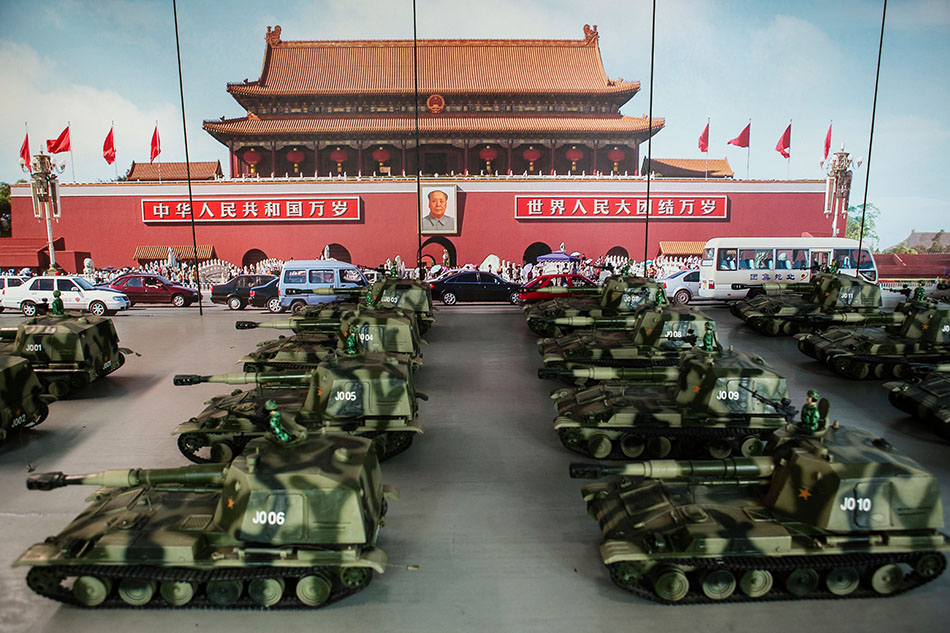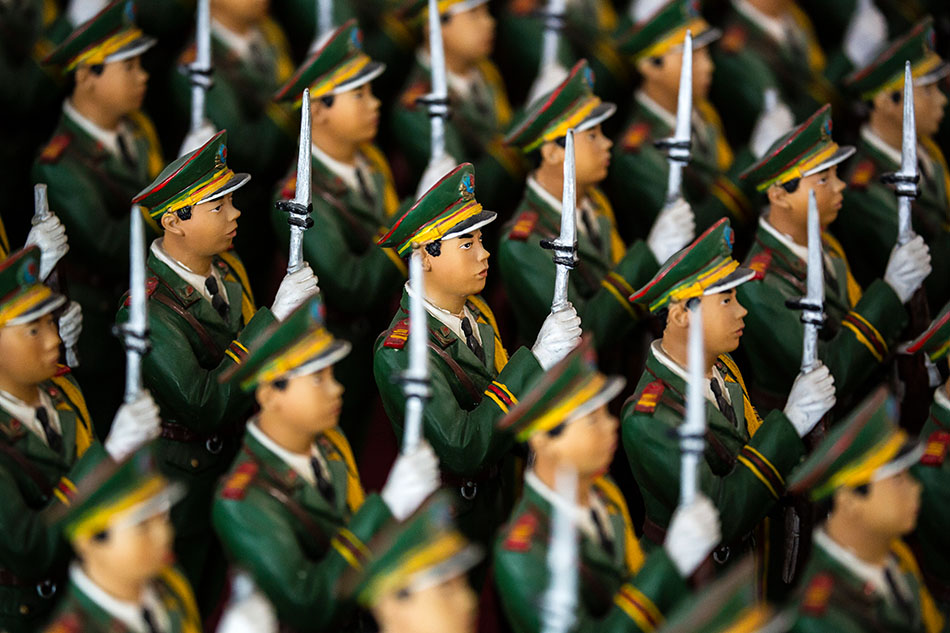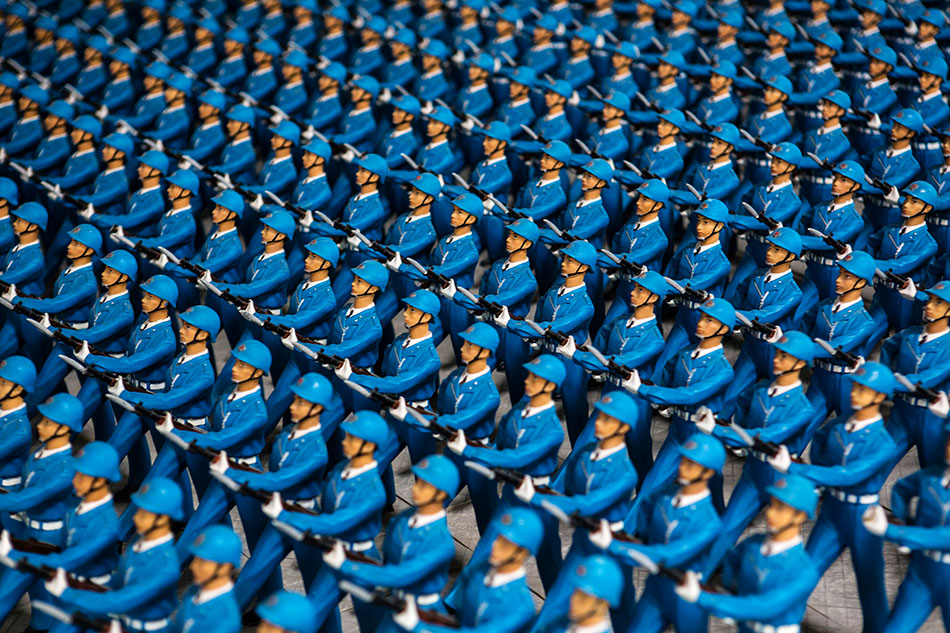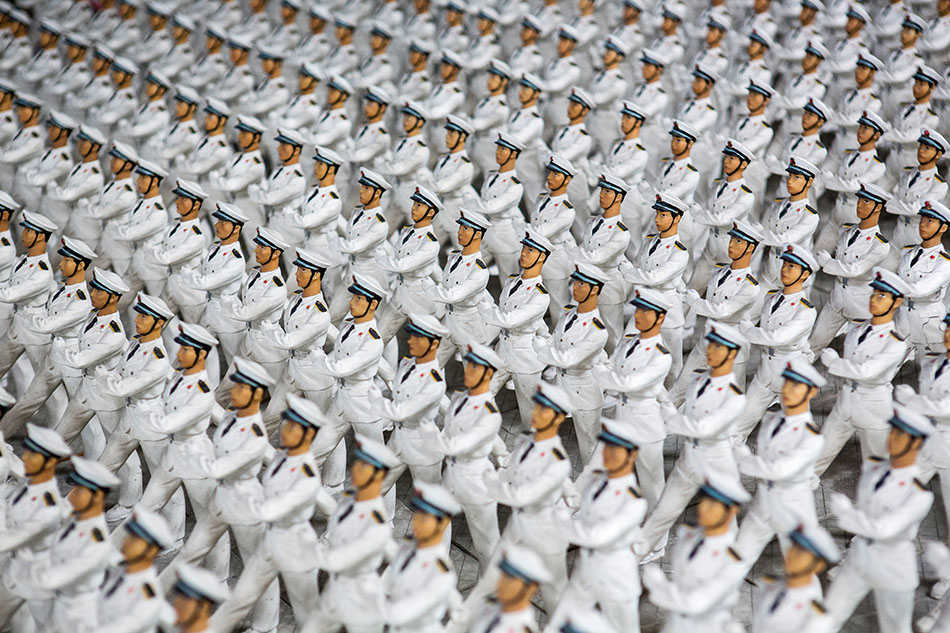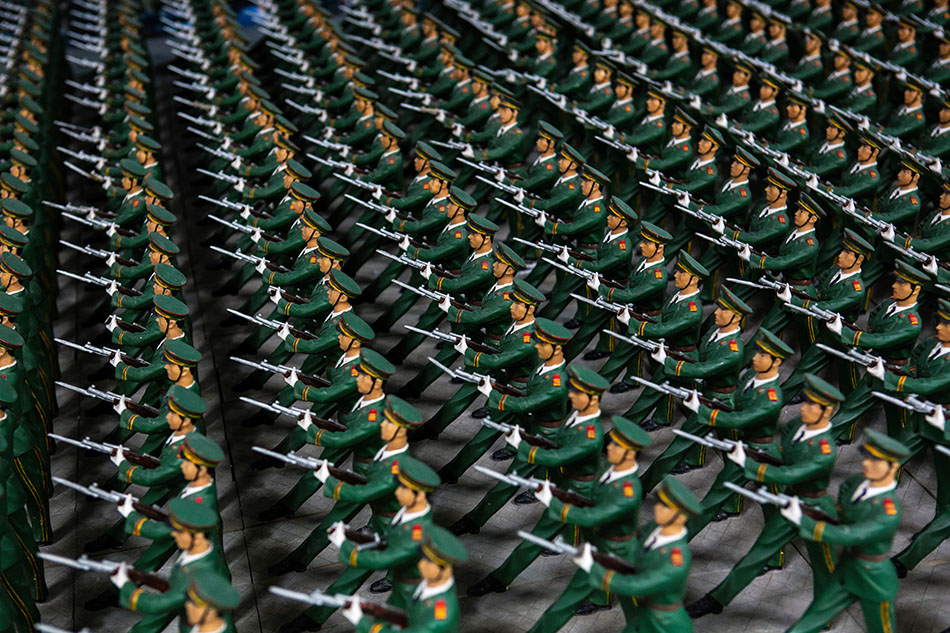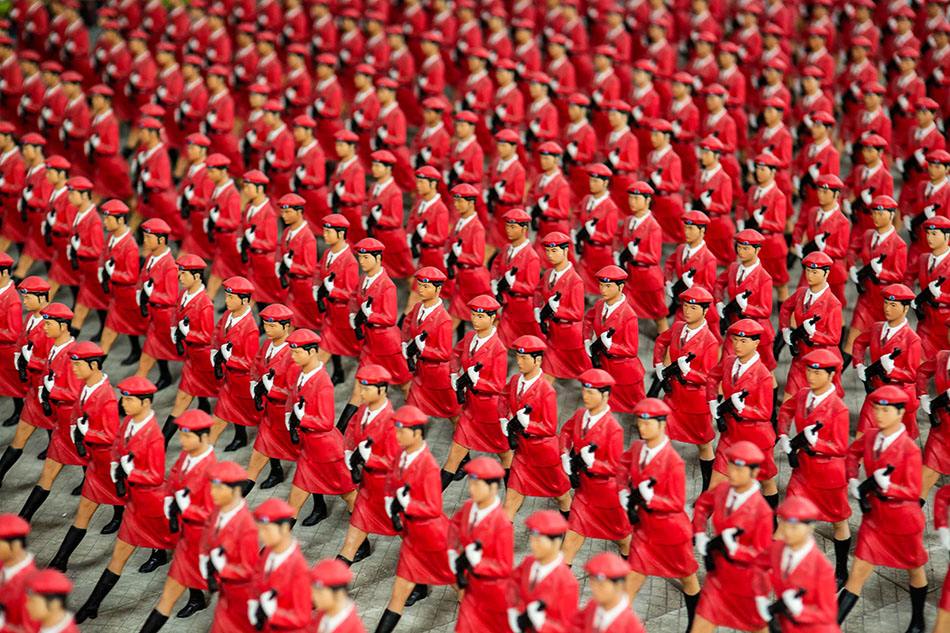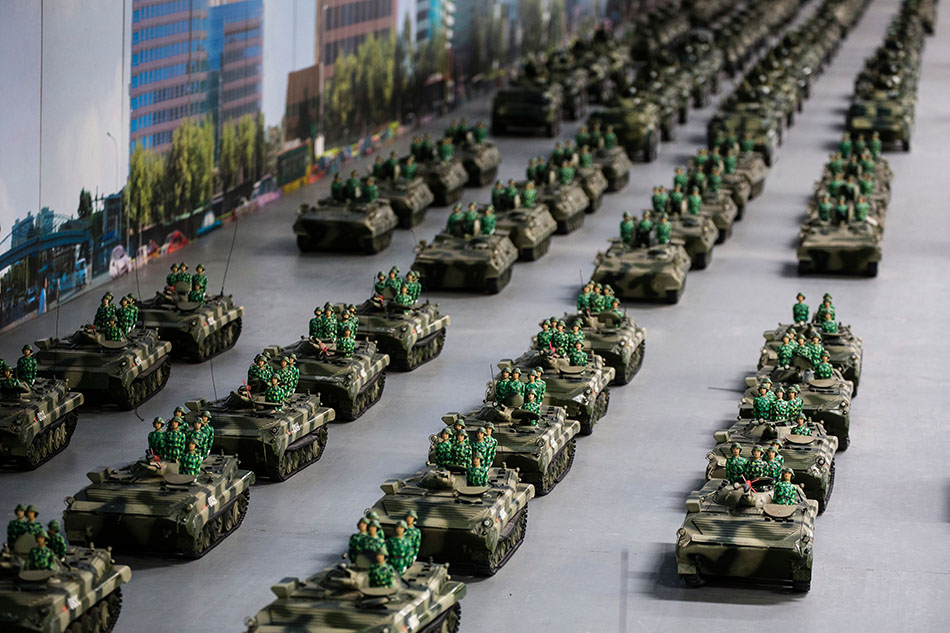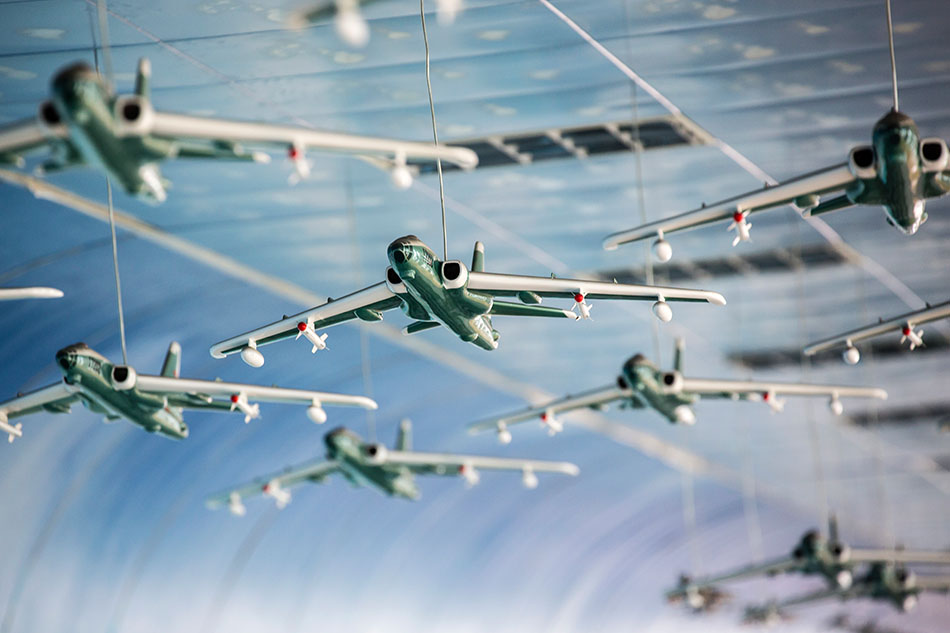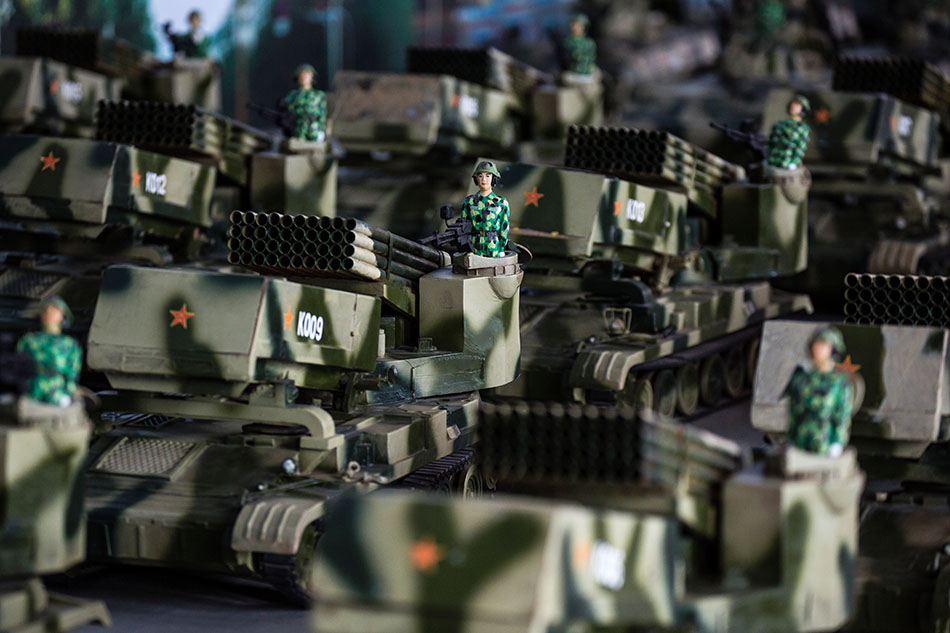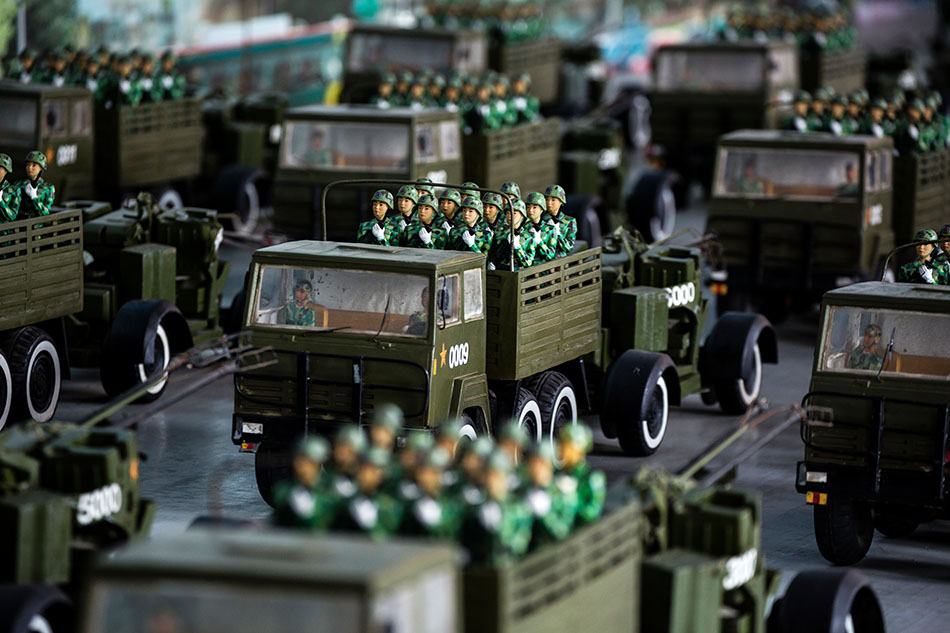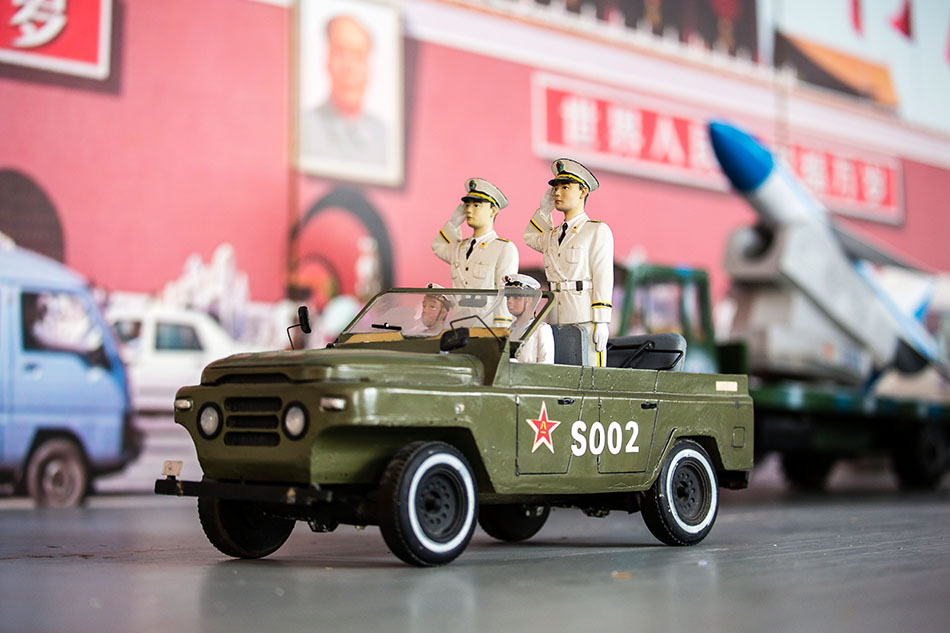The military parade for the sixtieth anniversary of the founding of the People’s Republic of China was held on October 1, 2009. It took months of preparation. Over 10,000 troops and all manner of tanks, artillery, missiles, and aircraft processed down the Avenue of Eternal Peace with Chinese Communist Party leaders observing from Tiananmen Gate. The highly coordinated spectacle was one of the largest demonstrations of China’s growing military strength to date, clearly signaling the country’s intentions to take its place amongst the great world powers. The grand symbolic gesture was then immortalized in military museums and theme parks around China, but none more so than the Hengdian National Defense Technology Education Park. It displays an exact replica of every soldier, vehicle, and aircraft that took part in the march. Many of them sport distinguishing features like the Terracotta warriors that still stand testament to the armies of Qin Shi Huang, the first emperor of China. The massive diorama stretches for hundreds of meters and celebrates a militant nationalism that continues to seep into the core of Chinese society. China’s emergence as a world power is seen by many as a rightful status reclamation after centuries of humiliation at the hands of the West and other neighboring countries. There is little to stop them either.
The Modern Terracotta Army and Chinese Nationalism
October 13, 2013
